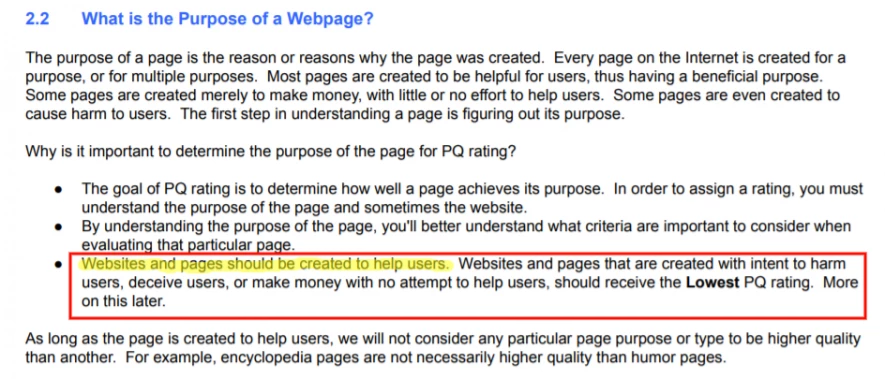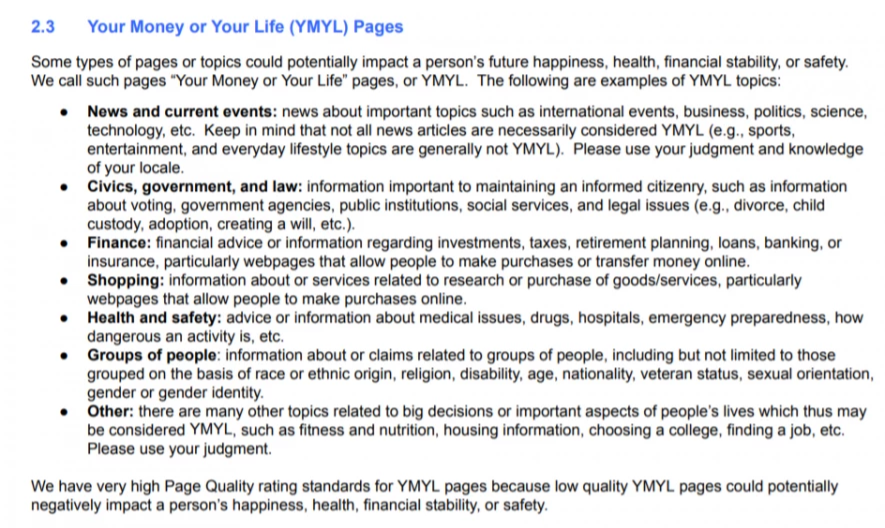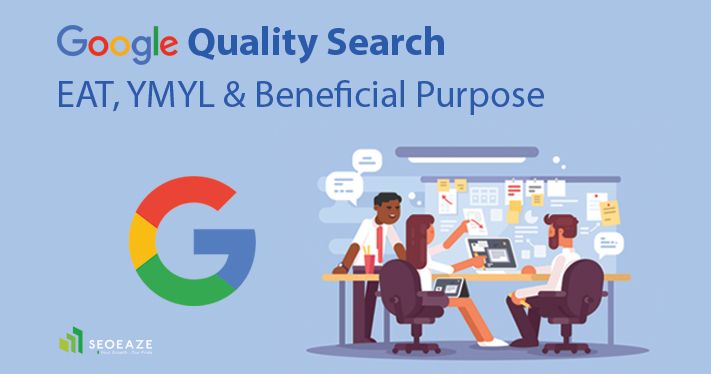Last Updated on October 3, 2019
As a webmaster or digital marketer, you must have wondered how exactly Google’s search algorithm works. You are not alone in this quest as millions of others across the globe are trying to figure out the same.
Google has grown to become the de facto point for searching for any information on the Internet. People now rely on the search giant to find any and every information they need, ranging from the latest movies screening nearby to important financial and health-related decisions, all are affected with the information found on the search giant. This is the reason why Google is particularly strict about the quality of results it responds with to the searchers. In an attempt to stay relevant to potential searchers, Google brings updates every now and then that affect website rankings.
Most of the time Google is tight-lipped about these updates but at times the search giant throws a random bone. Of all the information made available by Google regarding search algorithm updates, the most useful was the release of the Search Quality Evaluator Guidelines (SQEG) in 2015.
These guidelines contain three golden rules that Google uses to make sense of web pages and to differentiate between high-quality and low-quality content.
These rules are:
- Beneficial Purpose
- E-A-T (Expertise, Authoritativeness, Trustworthiness), or Page Quality
- YMYL (Your Money or Your Life)
Again, Google never officially accepted that the information used in the SQEG was exactly how the ranking algorithm functions but technically it’s a helpful book for human search evaluators at Google. These search evaluators at Google are the people who rate the performance of Google’s ranking algorithm and help study the impact of an update. If used correctly these guidelines can also serve as an essential tool for insights into what Google considers as high-quality web pages.
It all boils down to 3 important parameters, EAT, YMYL, and beneficial purpose. To better understand how to these golden rules apply to content, you have to know each one of them separately.
Google’s definition of quality web pages
In the last one year, the Search Quality Evaluators Guidelines were updated twice-on July 20, 2018, and May 16, 2019. Google introduced algorithm updates multiple times between these dates including the core update in June this year.
What you are about to read further is the impact of most current updates and how the incorporated changes by Google play for EAT and YMYL. While reading the information we are about to share, keep your minds open and understand that SQEG only guides us in a direction but does not provide any definite answers related to Google’s ranking factors. What we are sharing is only what we infer from the stuff that is shared in these guidelines.
Let’s break down the three golden rules one by one.
Beneficial Purpose: A phrase every website owner must be aware of
As mentioned earlier, the SQEG was updated twice recently once in 2018 and in 2019 again. The prominent of the two was the last year’s update that introduced the concept called the beneficial purpose.
If you have your copy of SQEG you can check out the mentioning of ‘beneficial purpose’ in the updated text in section 2.2 titled-What is the Purpose of a Web Page?
 Google specifically mentions in the guideline that “Websites and pages should be created to help users.”
Google specifically mentions in the guideline that “Websites and pages should be created to help users.”
It means any page to be labeled as high-quality must fulfill the user’s intent and must be user-centered serving them as a useful resource. To give us an idea of what these help pages are about, Google mentions:

If you have a webpage that is created only with the sole motive of making money and with no attempt to help users, it will be inevitably marked as the lowest quality page.
Mentioning the ‘beneficial purpose’ again in section 3.2, the SQEG states that it is the first step in evaluating a page’s quality. Google mentions, “Remember that the first step of PQ rating is to understand the true purpose of the page.”
Remember the June core update this year? It was based on a beneficial purpose too. Even Google’s Danny Sullivan hinted that there’s nothing to fix per se for webmasters affected by this update as it is broader in scope.
We tell lots of things to do. Improve site speed. Consider secure. Etc. But that's not what this update was about. It's broad. And respectfully, I think telling people there's no particular thing to "fix" is indeed helpful. It means, hopefully, they think more broadly…
— Danny Sullivan (@dannysullivan) August 1, 2018
In 2019, you have to understand that you cannot succeed in Google’s search rankings unless you have a laser-sharp focus on users-what they want and need. Your website and content must benefit users in some way, irrespective of which category you are in.
YMYL: Your Money or Your Life Content
Google is particularly sensitive about YMYL niche because if presented with untruthful, deceptive or misinformation, this could directly impact a reader’s health, happiness, financial stability or safety. Google has to be accountable for such content even though it is not legally obliged to.
Stakes are very high in YMYL type of content and if you are in this type of niche, you have to make extra sure that the information that you provide does not adversely affect the life and livelihood of the readers. This is why Google is super paranoid with such content and online experts with relevant information must write YMYL content.
If you are wondering what constitutes YMYL category, then here are some:
- Government, law and civics topics
- News and current event topics
- Financial advice on investments, taxes, loans, etc.
- Medical advice, information on drugs, hospitals, etc.
- Shopping information regarding the purchase
- Information related to people, particularly about ethnicity, religion, race, etc.
Here’s a complete overview of YMYL pages given in the SQEG:

Google recommends that the human search evaluators must use their judgment in deciding whether a page is a YMYL content or not. If so, then the page must have high levels of EAT.
Now let’s take a look at what YMYL is all about.
E-A-T: Expertise, Authoritativeness, Trustworthiness
Expertise, Authoritativeness, and Trustworthiness or EAT are quite self-explanatory. Previously the EAT was more or less the synonym for Page Quality but after the May 2019 update, it changed. Now expertise, authoritativeness, and trustworthiness are one of the important factors that determine the page quality of a web page.
To understand these Page Quality rating factors we will have to consider each element of EAT individually. After the beneficial purpose of a page is evaluated, its EAT level is carefully considered if the content is YMYL.
1.Expertise
A reference to the creator of the main content of the page, it simply asks, “are the creators expert on the topic?” Do the writers have the necessary credentials to back up the information that they are sharing with the readers.
In the recent update in the guidelines, Google made an exception in the form of “everyday expertise.” In particular, it refers to people with relevant life experience in some specific topics to be considered as experts with no need for formal training or education. But it only holds true for non-YMYL content.
For instance, if a person frequents a restaurant, he or she might be able to provide helpful information to other restaurant-goers and there is no need for any special education or training for the same.
2.Authoritativeness
This refers to the main content itself that appears on the website. The textbook definition of ‘authoritativeness’ is having generally recognized authority. It means your readers know you, your background and consider you as the leader in your industry. If they consider you as a reliable source of information, then you have high authoritativeness.
3.Trustworthiness
The “Trustworthiness” element covers all-the writers, content and the website. Being trustworthy means readers can recognize your website as a source of honest and true information which is accurate.
Pages that require high EAT
In SQEG, there are specific notes about the topics that require high EAT. These are the pages that contain YMYL topics such as medical advice, scientific topics, news articles, high stake topics (parenting, home remodeling, etc.), financial advice, tax topics, etc.
The Takeaway-High Quality Content is not only an expert but entirely user-focused
If you want to create content that Google will rank, then the three rules found in the Search Quality Evaluation Guidelines must be abiding by, i.e. beneficial purpose, E-A-T, and YMYL.
When creating content, make sure you are not just trying to make money but actually helping readers to find a solution to their problem or answers to questions they might have.
Content with the right expertise behind it ranks easily as compared otherwise. Some subjects require higher EAT than others. YMYL pages will certainly require a lot more expertise than non-YMYL pages to get ranked on Google and not be affected by future updates.
If you are creating YMYL pages, make sure you provide the highest EAT possible. As content can have a direct impact on the lives, happiness, and livelihood of the readers, it must be created with caution and commitment.
Always keep in mind that Google’s standards are constantly changing as the expectations of searchers is always changing and the search giant has to keep up in an effort to stay relevant.

